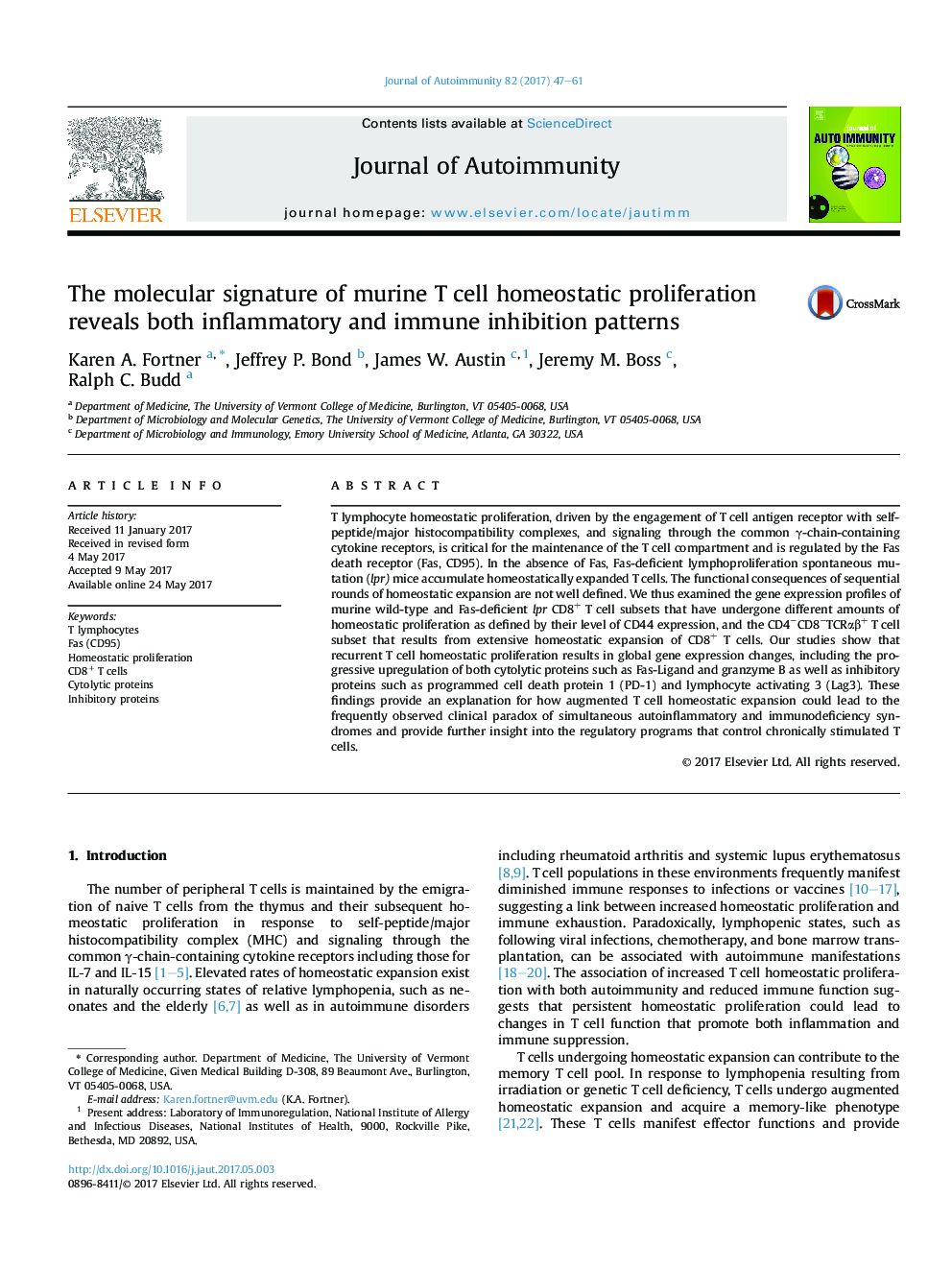| کد مقاله | کد نشریه | سال انتشار | مقاله انگلیسی | نسخه تمام متن |
|---|---|---|---|---|
| 5667871 | 1592267 | 2017 | 15 صفحه PDF | دانلود رایگان |

- CD8+ T cells undergoing homeostatic proliferation progressively upregulate cytolytic proteins.
- Homeostatically expanding CD8+ T cells also progressively increase inhibitory proteins.
- The findings could explain the clinical immunology paradox of simultaneous autoinflammatory and immunodeficient states.
T lymphocyte homeostatic proliferation, driven by the engagement of T cell antigen receptor with self-peptide/major histocompatibility complexes, and signaling through the common γ-chain-containing cytokine receptors, is critical for the maintenance of the T cell compartment and is regulated by the Fas death receptor (Fas, CD95). In the absence of Fas, Fas-deficient lymphoproliferation spontaneous mutation (lpr) mice accumulate homeostatically expanded T cells. The functional consequences of sequential rounds of homeostatic expansion are not well defined. We thus examined the gene expression profiles of murine wild-type and Fas-deficient lpr CD8+ T cell subsets that have undergone different amounts of homeostatic proliferation as defined by their level of CD44 expression, and the CD4âCD8âTCRαβ+ T cell subset that results from extensive homeostatic expansion of CD8+ T cells. Our studies show that recurrent T cell homeostatic proliferation results in global gene expression changes, including the progressive upregulation of both cytolytic proteins such as Fas-Ligand and granzyme B as well as inhibitory proteins such as programmed cell death protein 1 (PD-1) and lymphocyte activating 3 (Lag3). These findings provide an explanation for how augmented T cell homeostatic expansion could lead to the frequently observed clinical paradox of simultaneous autoinflammatory and immunodeficiency syndromes and provide further insight into the regulatory programs that control chronically stimulated T cells.
Journal: Journal of Autoimmunity - Volume 82, August 2017, Pages 47-61